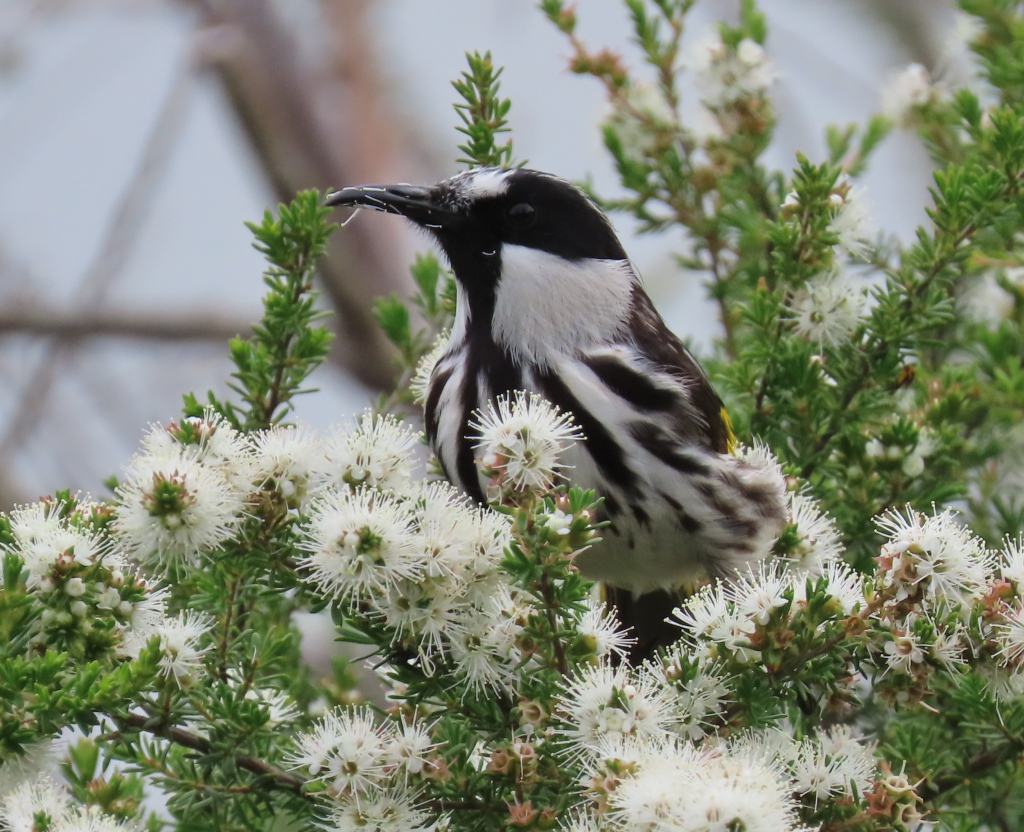Blog Archives
White-cheeked Honeyeater enjoying the spring blossoms
A White-cheeked Honeyeater peeks out from a flower-covered bush. The bird is mostly black and white, but you can just make out some of the yellow markings on its wings and tail:

If you have trouble distinguishing these little birds from New Holland Honeyeaters, you’re not alone! This one has the black eye and large white cheek patch that identify it as a White-cheeked Honeyeater. A while ago, I took some photos of both birds to compare them.
Common name: White-cheeked Honeyeater
Scientific name: Phylidonyris nigra
Approximate length: 16-19 cm
Date spotted: 20 November 2023 (spring)
Location: Manly Dam Reserve, New South Wales, Australia: 33°46’30.3″S 151°14’46.6″E
White-cheeked Honeyeaters and New Holland Honeyeaters hanging out together
Until today, I didn’t realise that we have two very similar types of honeyeaters in the area. I’ve seen and photographed New Holland Honeyeaters before. Yesterday, I took some photos of a number of birds, thinking they were all the same type.
Looking at the photos today, I noticed that some birds in the group have black eyes, some white, and the black-eyed birds seem shorter and more compact than the others. It turns out that the group included White-cheeked Honeyeaters, which I haven’t knowing seen before. They’ve probably been around all along, but I just didn’t notice.
This is a New Holland Honeyeater. Notice the white eye, and the smallish white patch near the beak:
Another New Holland Honeyeater:
Whereas the next one is a White-cheeked Honeyeater. Notice the black eye and the large white patch on the cheek:
This video shows a couple of White-cheeked Honeyeaters. You can hear the calls of the other birds around them:
While I was watching the group of birds, they would all hang out together in their chosen area of bushy cover, then emerge to go foraging in the nearby trees. Every now and then, something would alarm them, and they’d all dive for cover again. Standing near them was a little alarming, as they move extremely fast and I could hear them hitting the leaves all around. After a few moments, they’d emerge and repeat the pattern. The next video shows one such episode:
Common name: White-cheeked Honeyeaters and New Holland Honeyeaters
Scientific name: Phylidonyris nigra and Phylidonyris novaehollandiae
Approximate length: 16-19 cm and 17-19 cm
Date spotted: 9 November 2019 (spring)
Location: Manly Dam Reserve, New South Wales, Australia: 33°46’55.8″S 151°15’26.2″E



